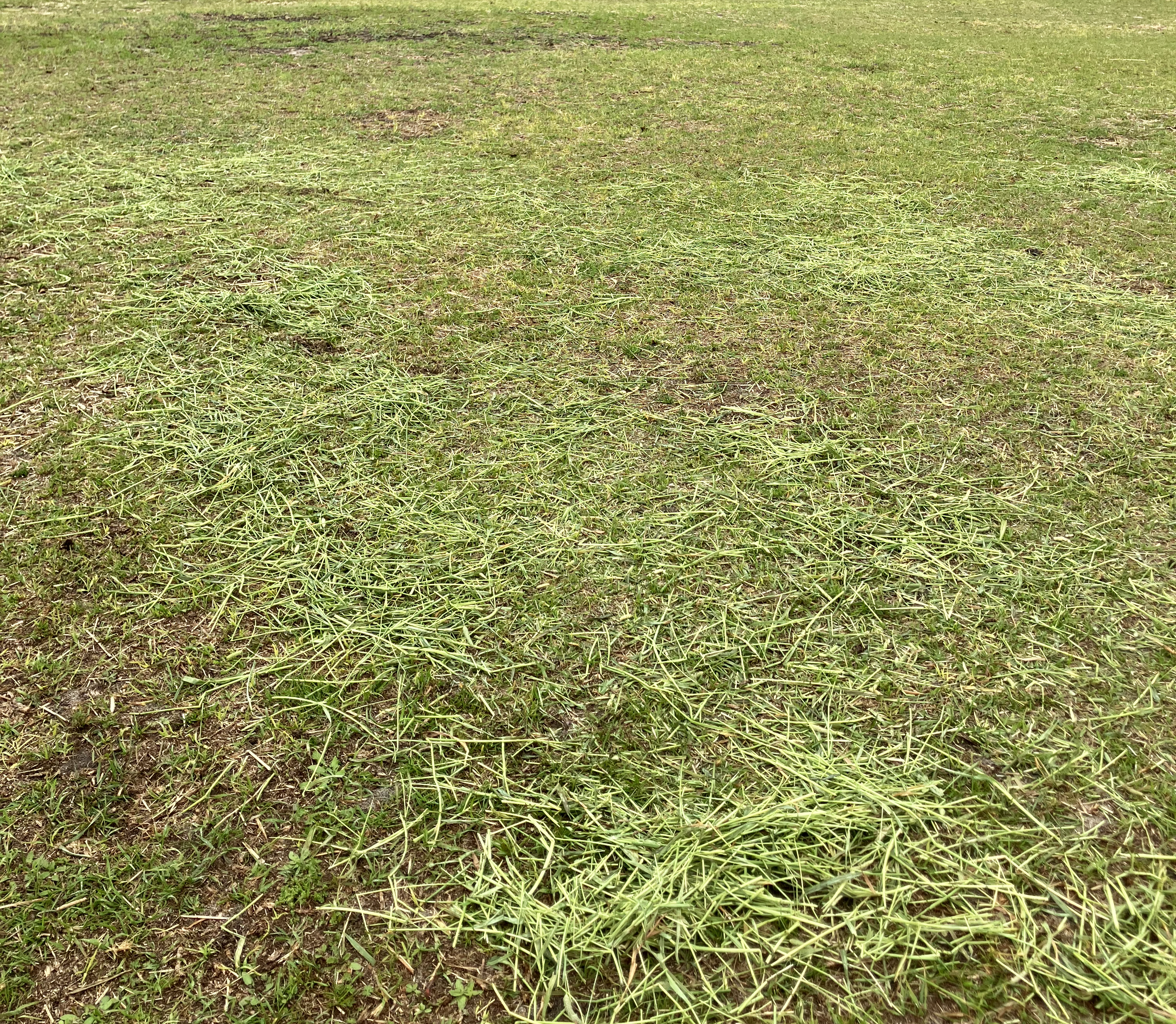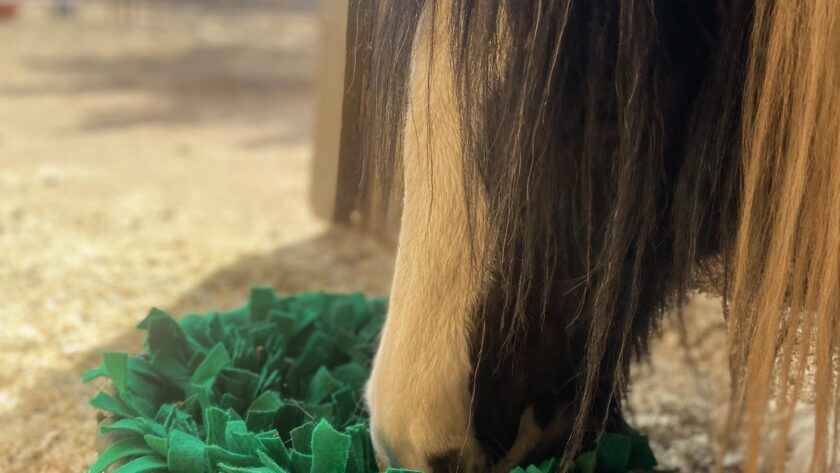FORAGING is one of the most important natural behaviors horses need to engage in.
Foraging is the process of a horse using its nose to sniff, whiskers to feel, lips to wiggle around, and taste grasses in their environment. Grazing is the act of actually eating the grass. And, while eating is obviously an important thing to do for, you know, survival, the foraging behavior that comes just before the chomping and chewing is vitally important for the horse’s mental health.
If you keep a horse on pasture, they have plenty of opportunity to forage. Yay! Yes, there are challenges with lush grass and easy keeper or metabolic horses, but we have solutions to those problems. If your horses don’t have grass to forage through, here are some helpful hacks that simulate the foraging process and activate happy hormones in your horse’s brain that bring calmness and a sense of satisfaction:

Spread your hay out to simulate foraging. It releases happy hormones in your horse’s brain!
Kick your hay!
The great thing about square bales is that you can feed flakes. We drop several flakes in the morning and evening while our spring pasture grasses awaken from their long winter nap. The hay is weighed so we can ensure our horses are getting the right amount, then we load it up in the wagon and spread it out in the paddocks. First, we drop a flake on the ground, then kick it as hard as possible. This gets the dust out and spreads the hay along the ground so that our horses have to walk and eat in order to consume all of the hay. Even if the wind picks up strands of hay and spreads them further, that’s okay, because the process of chasing down edible grass (whether fresh or dried) is exactly the kind of foraging behavior we want to encourage in our horses.
Get a Snuffle Pasture
This brilliant feed pan that is enhanced with simulated grass makes foraging through it for grain or treats exactly what horses need to stay sane. It is especially helpful for horses who are still in stalls for most of the day. Use the Snuffle Pasture in between hay or grain feedings when your horse is most likely to show stress behaviors like weaving, cribbing, windsucking, or lip smacking. Snuffle Pasture
Hide healthy treats like carrots, hay pellets, or horse cookies in horse-safe toys.
Anything that allows them to sniff –> bite –> chew –> walk–> sniff –> bite, chew –> walk. It’s the foraging and walking a step or two in between that matters the most.
Rotate your paddocks
Even if you don’t have lush pasture, anything your horse can forage through will support his mental and emotional wellbeing. Try rotating your paddocks every few days so they don’t turn completely to dirt. Even the ability to snuffle through weeds and crabgrass is helpful.
For more information about how you can incorporate habitat features that create calmer horses, contact Helena.

